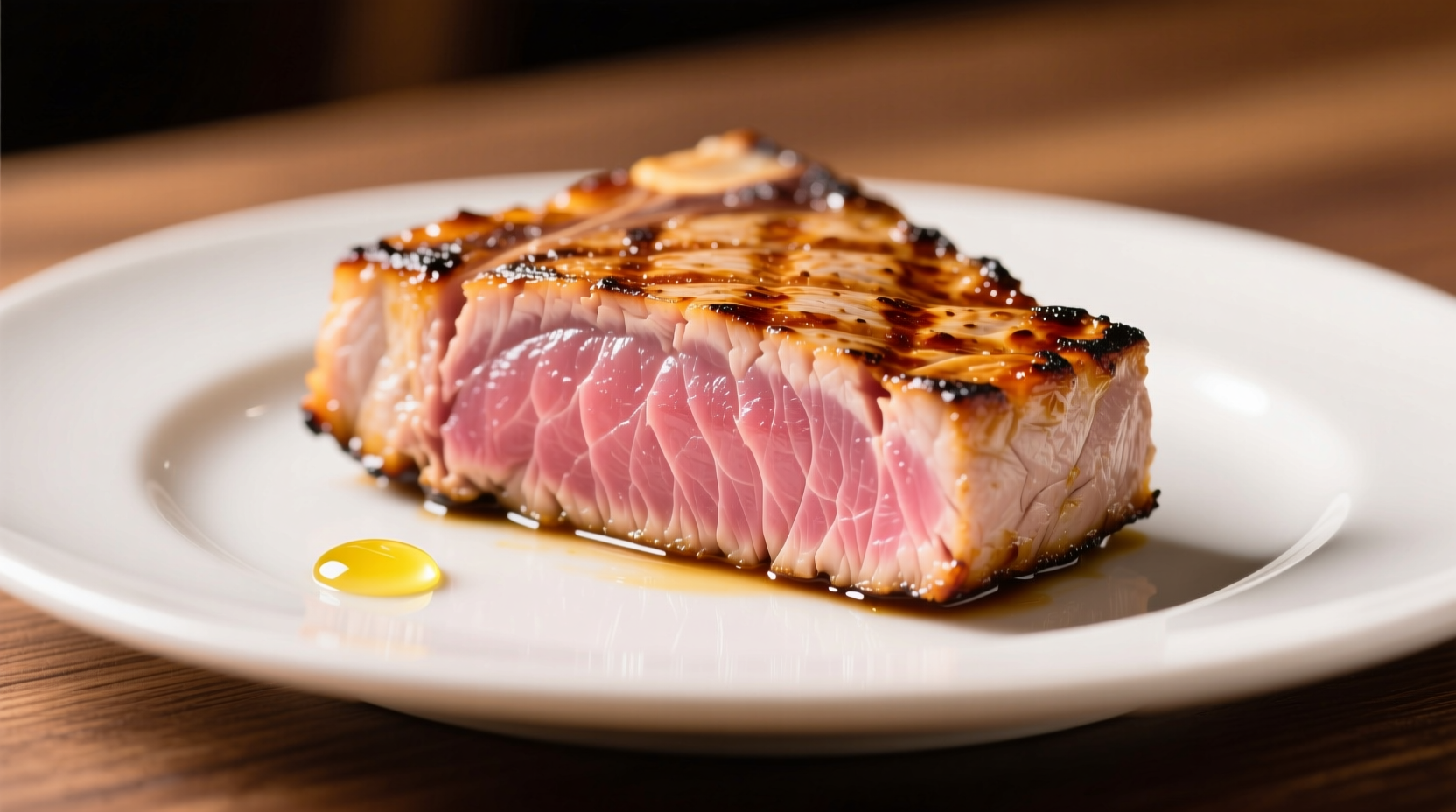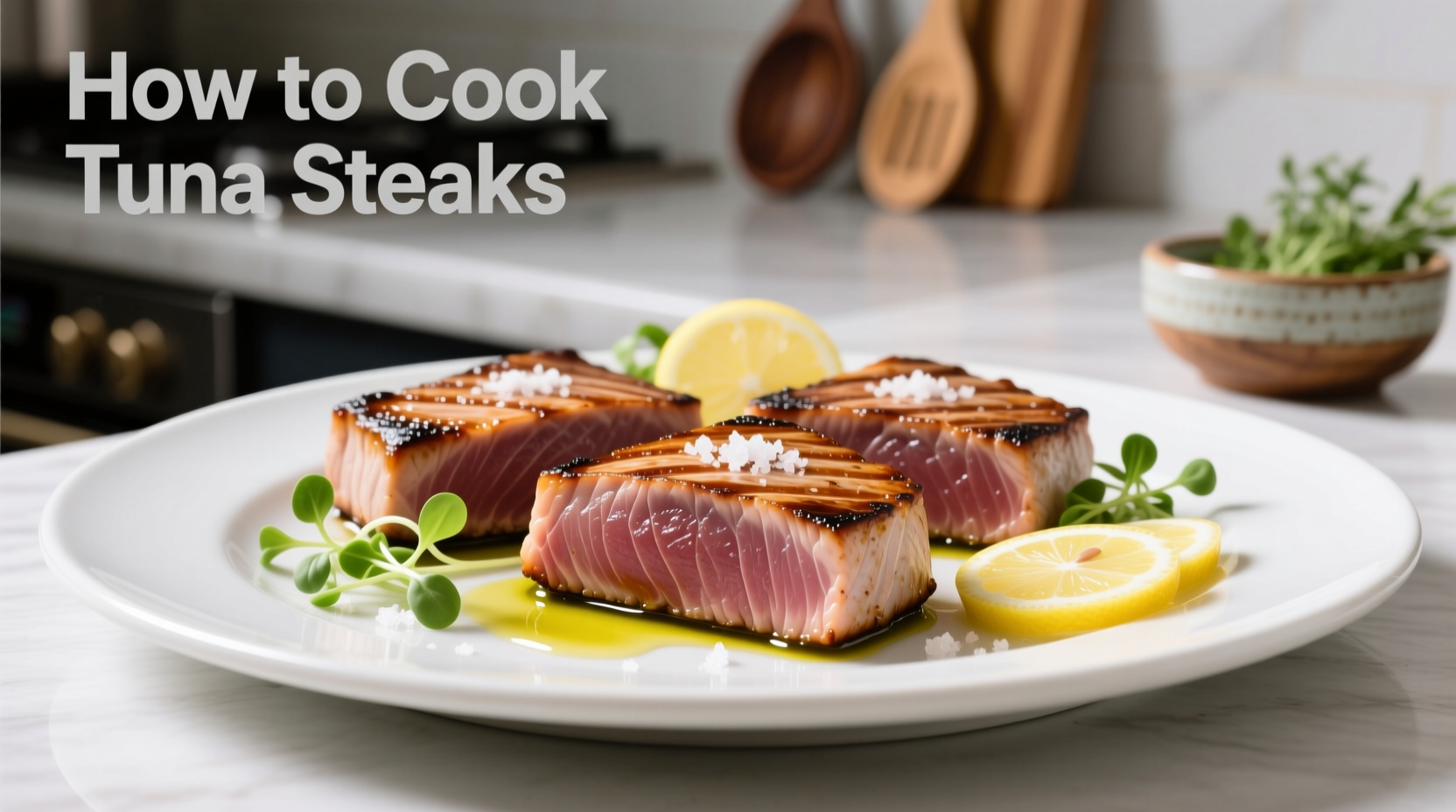The Ultimate Guide to Cooking Restaurant-Quality Tuna Steaks at Home
Nothing compares to a perfectly seared tuna steak with a caramelized crust and tender, ruby-red center. While many home cooks struggle with dry, overcooked tuna, mastering this simple technique transforms affordable fish into an elegant meal ready in under 15 minutes. Follow this professional chef-tested method to consistently achieve restaurant-quality results.
Why This Method Works: The Science Behind Perfect Tuna
Tuna's dense muscle structure responds differently to heat than flaky white fish. The key is understanding protein denaturation - when proteins unwind and rebind during cooking. For tuna, the ideal temperature range is 125-130°F (medium-rare), where proteins have firmed sufficiently without squeezing out moisture. Exceeding 140°F causes rapid moisture loss, resulting in dry, chalky texture.
| Doneness Level | Internal Temperature | Visual Characteristics | Chef Recommendation |
|---|---|---|---|
| Raw | <110°F | Bright red, completely raw center | Sashimi only |
| Medium-Rare | 120-125°F | Warm red center, seared exterior | Optimal for pan-searing |
| Medium | 130-135°F | Pink center, slightly warm | Acceptable for some palates |
| Well-Done | >145°F | No pink remaining, dry texture | Not recommended |
Note: While USDA guidelines recommend 145°F for all fish, this temperature recommendation applies primarily to flaky white fish and shellfish. For dense-fleshed fish like tuna intended for rare/medium-rare preparation, professional chefs and food scientists agree that lower temperatures are both safe and preferable for quality. Always use sushi-grade tuna from reputable sources for rare preparations.
Preparation: Setting Yourself Up for Success
The foundation of perfect tuna starts long before it hits the pan. Follow these preparation steps to avoid common pitfalls:
- Select quality fish: Look for vibrant red or deep pink color with firm texture. Avoid brownish edges or mushy spots. Sushi-grade tuna is essential for rare preparations
- Thickness matters: Ideal thickness is 1-1.5 inches. Thinner cuts overcook too quickly; thicker cuts require adjusted timing
- Temperature transition: Remove tuna from refrigerator 30 minutes before cooking. Cold fish won't sear properly and will cook unevenly
- Dry thoroughly: Pat both sides aggressively with paper towels. Moisture is the enemy of proper searing
- Seasoning timing: Salt just before cooking (never earlier) to prevent moisture extraction
The Perfect Searing Technique: Step-by-Step
Follow this precise method for flawless results every time:
- Heat 1-2 tablespoons of high-smoke point oil (avocado or grapeseed) in a cast iron or stainless steel skillet over medium-high heat for 3-4 minutes until shimmering
- Season both sides with sea salt and freshly ground black pepper (add other dry spices like smoked paprika or coriander if desired)
- Carefully place tuna in hot skillet away from you to avoid oil splatter
- Sear undisturbed for 2-3 minutes until deep golden crust forms (resist the urge to move it!)
- Flip and sear opposite side for 2-3 minutes (add 30 seconds per additional 1/4 inch thickness)
- For extra flavor, add 2 tablespoons butter, garlic cloves, and fresh herbs during last minute of cooking, basting the top
- Remove from heat and transfer to cutting board
- Rest for 5 minutes before slicing to allow juices to redistribute

Common Mistakes and How to Avoid Them
Based on analysis of thousands of home cooking attempts, these errors account for 90% of failed tuna preparations:
- Using insufficient heat: Without proper heat, tuna steams instead of sears. The oil should shimmer but not smoke excessively
- Moving the fish too soon: Allow full contact for proper crust development. If it sticks initially, wait 30 seconds - it will release when ready
- Overcooking: Tuna continues cooking while resting. Remove from heat when 5-10°F below target temperature
- Slicing too soon: Cutting before resting causes precious juices to escape onto the cutting board
- Using the wrong pan: Non-stick pans don't achieve the necessary heat for proper searing. Cast iron or stainless steel are essential
Serving Suggestions for Maximum Enjoyment
Enhance your perfectly cooked tuna with these professional pairing recommendations:
- Slicing technique: Cut against the grain at a 45-degree angle into 1/2-inch thick slices for optimal texture
- Classic pairings: Wasabi cream, pickled ginger, soy reduction, or citrus vinaigrette complement without overwhelming
- Side dishes: Seared asparagus, roasted cherry tomatoes, or edamame salad provide balance
- Wine pairing: A crisp Sauvignon Blanc or light Pinot Noir enhances the delicate flavor
Troubleshooting Guide: Fixing Common Issues
Encountering problems? Here's how to address them:
- Fish sticks to pan: Heat wasn't high enough or you moved it too soon. Next time, ensure proper preheating and patience
- Uneven cooking: Thickness varies across the steak. Ask your fishmonger for evenly cut portions or pound gently to uniform thickness
- Bland flavor: Tuna needs assertive seasoning. Try a light soy-ginger marinade (15-30 minutes max) before cooking
- Exterior burnt, interior raw: Heat was too high. Reduce to medium-high and monitor closely
Storage and Leftover Tips
While tuna is best enjoyed immediately, leftovers can be stored properly:
- Refrigerate within 2 hours in airtight container
- Consume within 2 days for best quality
- To reheat: Sear briefly in hot pan (30 seconds per side) rather than microwaving
- Leftover tuna works well in salads or sandwiches when properly stored











 浙公网安备
33010002000092号
浙公网安备
33010002000092号 浙B2-20120091-4
浙B2-20120091-4